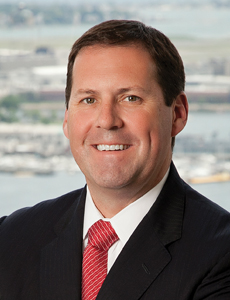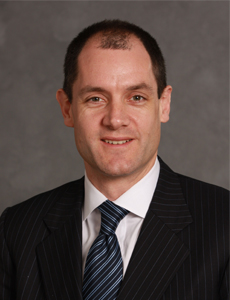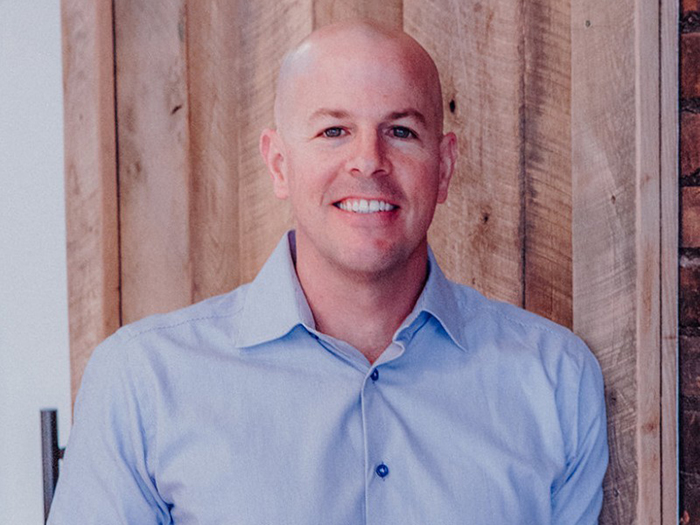Excess and Surplus
Challenges and Opportunities

Competition in the excess and surplus (E&S) lines market has become increasingly fierce over the last 12 months, driven by new entrants and greater capacity.
Berkshire Hathaway Specialty Insurance (BHSI) has already staked its claim, capturing a generous slice of market share during its first year in the business, which has resulted in a squeeze on prices and a wider availability of programs.
However, despite the increased competition, there are still significant growth opportunities for those companies willing to take on the risk, particularly in the professional liability market, most notably directors’ and officers’ (D&O) and cyber liability, according to experts.
“Generally capacity is plentiful, but pricing varies between different lines of business,” said David Bresnahan, executive vice president at BHSI.
“Pricing in the property market, for example, is negative, however health care and D&O are flat, and casualty is still rate positive.”
In its 40th anniversary year, the National Association of Professional Surplus Lines Offices (NAPSLO) will have several issues to keep top of mind at the organization’s annual convention in Atlanta in September.
Market Overview
Overall, the E&S market continued to grow in the first quarter of 2014, with more than half of the top 30 companies by market share reporting double-digit increases in premiums written year-on-year, according to SNL Financial.
However, as a segment, experts said, the market remains increasingly competitive as insurers fight for better rates in a soft market, driven by greater capacity and firms’ deployment of capital.
Such has been the squeeze on prices, said Wyeth Coburn, associate broker at CRC Insurance Services, that E&S carriers are being forced to compete for business with the traditional insurance market.
“Added to that,” he said, “is the strength of capital in the traditional market right now, which has resulted in many of those carriers moving into areas that were historically surplus lines’ territory.”
Big Business
The E&S market, traditionally a bellwether for the wider insurance market, is big business — worth $33 billion, according to A.M. Best.
SNL estimated that premiums written for the property and casualty market increased 4.5 percent, to $6.5 billion in the first quarter of 2014.
Much of that growth has resulted from a better understanding by insurers of the risks being covered, and their pricing accordingly.
Realizing the financial rewards available, several new entrants from the traditional insurance space, most notably Berkshire Hathaway, have made a push into the E&S market since 2012.
BHSI has already established itself as the 9th largest E&S player by market share, with its premiums increasing 48 percent, to $190.7 million in the first quarter of 2014. Most of that growth came from coverage written on the nonadmitted paper of Berkshire Hathaway subsidiary National Fire & Marine Insurance.
Validus Holdings’ $690 million acquisition of Western World Insurance Group and Endurance Specialty Holdings’ recent spirited attempt to buy Aspen Insurance signal that competition and M&A could reasonably be expected to increase further.
New Opportunities
Scott Culler, regional president at Markel, said that, while competition has increased, new opportunities have also become available.
“From a company perspective,” he said, “I think the biggest challenge we face is there are so many more competitors out there and options in terms of programs available to wholesale and specialist distributors than there were just 10 years ago.
“Over the last few years especially we have seen a much higher level of investment in new ventures and existing businesses looking to grow their book. It’s just mushroomed from there really.
“But what’s encouraging from our point of view,” Culler said, “is that at the same time there’s also been a continued opportunity for growth as the E&S market has become more central to the wider insurance industry.”
Among the biggest growth opportunities, Culler said, is professional liability.
But in order to unlock that potential, he said, businesses first need to improve their underwriting discipline.
“From a company perspective, I think the biggest challenge we face is there are so many more competitors out there and options in terms of programs available to wholesale and specialist distributors than there were just 10 years ago.” — Scott Culler, regional president at Markel.
As consumers know more about the policies they’re buying and demand a higher level of cover not readily available in the traditional insurance marketplace, they are increasingly turning to E&S providers for greater risk management expertise, particularly in claims and loss prevention, he said.
One sector that has benefitted most from this heightened awareness is cyber liability, as data breaches and security have become more prevalent.
“It reminds me of the implementation of Employment Practices Liability Insurance in the early 1990s in response to an upsurge of employment claims,” Culler said.
“It’s true to say that we’re not just seeing large companies getting hit by data breaches, but now ‘mom and pop’ shops are starting to be adversely affected as well.”
Jeremy Johnson, president and CEO of Lexington Insurance, AIG’s E&S division, said the evolution of companies’ new business models, allied with the advancement of technology and globalization has created an opportunity for the market to provide new and more innovative solutions.
His firm, he said, has already seen a strong uptake from the energy, transport and infrastructure sectors.
In recent months, Johnson said, Lexington has deployed new products for commercial real estate financing, for unmanned aerial vehicles and for evacuation coverage associated with extreme weather events.
“There is a great deal of opportunity in the market today for those organizations that can recognize it quickly and develop strategies to support it,” he said.
“Understanding change signals in the market is absolutely critical to the development of new products and services.”
BHSI’s Bresnahan said the two areas receiving the most attention at his company are D&O and property catastrophe lines.
“When it comes to counterparty exposure,” he said, “it’s the C-suite and directors and officers of our potential clients who are paying the most attention to credit quality.
“From a property catastrophe standpoint, we are proving very popular with larger clients that are looking to be creative in the way they do business, and want to enter into a long-term partnership with a company that specializes in that business and is insulated from the whims of the reinsurance market,” he said.
He added that there are also significant opportunities for companies to improve their service levels in claims and underwriting.
Increased Competition
On the property side, Jim Dowdy, senior vice president at Zurich Insurance, said E&S carriers are fighting to keep their existing business due to increased competition and capacity in the market stemming from a largely benign catastrophe year.
“The traditional carriers are becoming more competitive,” he said, “and, as a result, more of that type of business is leaving the E&S market, so the biggest challenge right now for wholesalers is trying to hold onto their existing business.”
M&A Activity
As competition has increased, consolidation of the E&S market has continued. Last year resulted in a number of significant takeover deals, led by Enstar Group, which, in July, announced the acquisition of Torus Insurance Holdings for $692 million.
A month earlier, Fairfax Financial Holdings said it would be buying American Safety Insurance Holdings for $306 million, as Tower Group International agreed to a deal for American Safety Reinsurance for $59 million.
Markel’s Culler predicted additional M&A activity in the future as companies continue to cut rates and release reserves.
Regulatory Hurdles
Despite the recent growth enjoyed by the E&S market, there remain obstacles on the regulatory front.
Brady Kelley, executive director at NAPSLO, said one of the key reforms impacting the sector is the Terrorism Risk Insurance Act (TRIA), which expires at the end this year. TRIA, originally enacted in 2002, provides a federal backstop for terrorism claims.
NAPSLO has been lobbying for the program to be reauthorized in the same format to cover new policies that extend beyond this year.
The Senate has approved reauthorization, but as of the publication of this issue, legislation has stalled in the House.
NAPSLO has also been focusing its efforts on the Nonadmitted and Reinsurance Reform Act (NRRA), which governs the regulation and taxation of surplus lines transactions, and has already enjoyed considerable success, Kelley said.












